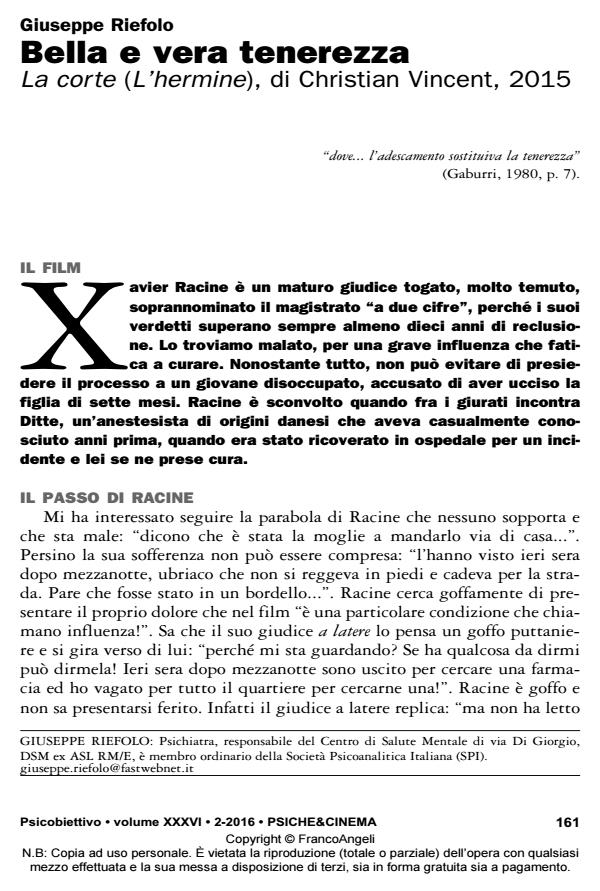True and real tenderness. Courted (l’hermine),
Journal title PSICOBIETTIVO
Author/s Giuseppe Riefolo
Publishing Year 2016 Issue 2016/2
Language Italian Pages 10 P. 161-170 File size 103 KB
DOI 10.3280/PSOB2016-002011
DOI is like a bar code for intellectual property: to have more infomation
click here
Below, you can see the article first page
If you want to buy this article in PDF format, you can do it, following the instructions to buy download credits

FrancoAngeli is member of Publishers International Linking Association, Inc (PILA), a not-for-profit association which run the CrossRef service enabling links to and from online scholarly content.
The movie seems to describe a love story, but before focusing on the sensual love, it deals with tenderness in relationships, which for psychoanalysis is at the bottom of the intersubjective therapeutic field. Freud considered the "current of tenderness" as a particular relational tone which, mitigating the infantile partial drives, introduces the adult sexuality. For the actual psychoanalysis, tenderness, before being an operation, is a basic position that the analyst takes while listening to the patient and by participating emotionally to the therapeutic process. The movie makes us reflect on the transits between beauty, considered as a process, and the evolution of beauty toward tenderness. Finally, the judgment, which the main characters of the movie are required to formulate, suggests that there are significant differences between the concept of Truth and Reality. Truth is a subjective dimension of the patient, while Reality is a relational dimension. Therapies continually help make real what is true for the patient.
Keywords: L’hermine; Tenderness; Beauty; Aesthetic Conflict; Truth; Reality; Movie and Psychoanalysis.
Giuseppe Riefolo, Bella e vera tenerezza. La corte (L’hermine), di Christian Vincent, 2015 in "PSICOBIETTIVO" 2/2016, pp 161-170, DOI: 10.3280/PSOB2016-002011